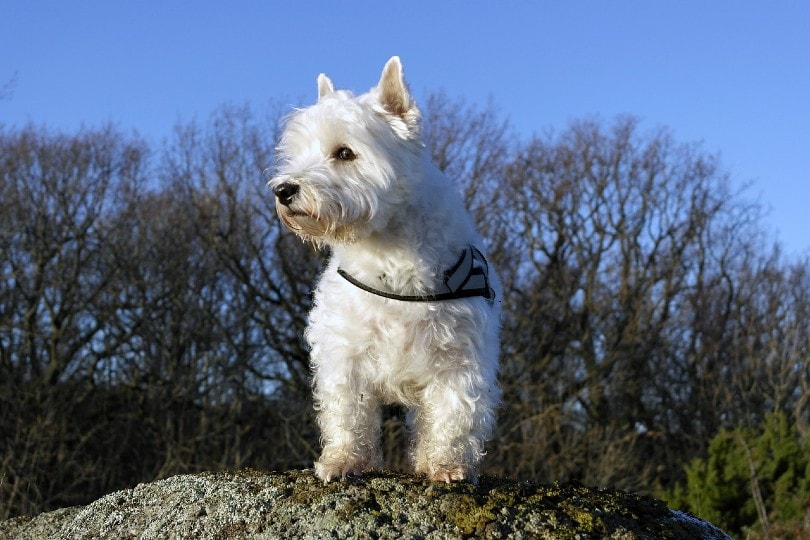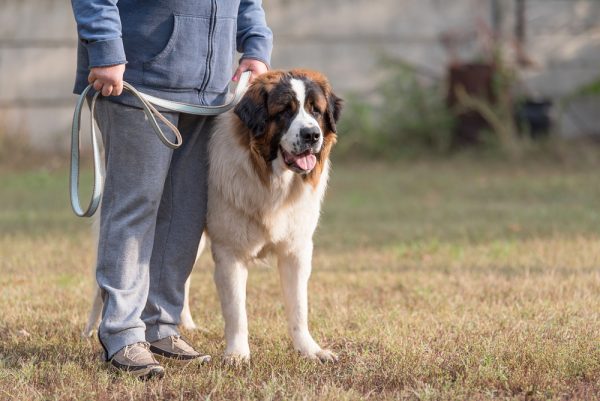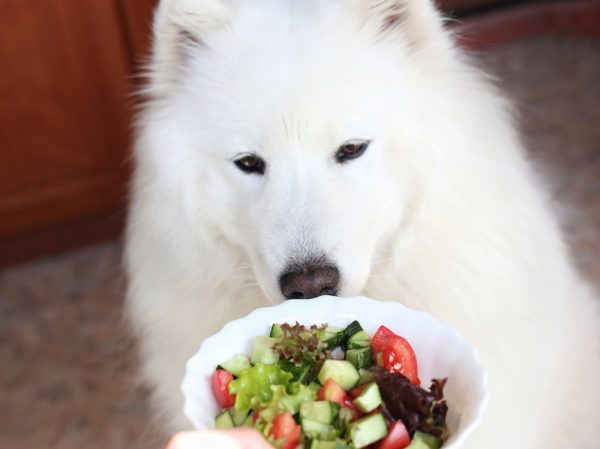In this article
The Westie, or West Highland Terrier, is a terrier breed that originated in Scotland and was bred to hunt foxes and other small game. It is a small breed, but what it lacks in size, this fun-loving and affectionate breed more than makes up for in character. Adult Westies weigh between 15 and 21 pounds and measure up to 11 inches at the withers and are usually fully grown by the age of 12 months. With a life expectancy of 12 to 16 years, you will have a full-grown and fully mature dog for up to 15 years.
To ensure healthy growth, provide a good diet of high-quality food and provide 60 to 80 minutes of exercise a day, and if you are concerned with any rapid weight loss or gain, consult a vet to ensure that your West Highland isn’t suffering any illness. Unfortunately, the Westie is prone to several health conditions and some of these can affect the dog’s size and growth rate.

West Highland Terrier Breed Overview
The West Highland White Terrier was first bred in Scotland and used for hunting foxes, badgers, and otters. The breed was also used to hunt vermin. The Westie is a small breed, but it doesn’t lack energy or intelligence. It can excel at agility, which is a good way to provide the physical exercise and mental stimulation that the breed needs.
The Westie is known to be affectionate and loving with family. While it was once bred for hunting, the breed is best known for being a loving companion dog, today, and is rarely used as a working dog. The modern Westie is more likely to be found chasing a squeaky toy around the house than it is to be seen chasing a fox around a field. Like most terrier breeds, the Westie can usually take or leave strangers. They shouldn’t be aggressive or overly cautious around people they don’t know, but they won’t run up to greet new people, either.
The breed is somewhat prone to a number of health conditions. In particular, keep an eye out for joint-related problems like patellar luxation and Legg-Calve-Perthese disease.
While the Westie is unlikely to be aggressive around other animals, they won’t back down from a fight if another dog starts trouble. And, similarly, they may chase cats. While the dog might not be aggressive towards cats, a marauding Westie is enough to cause most cats to run, which only serves to fuel the excitement further.
Westie Size and Growth Chart

There is no set weight that you can expect a Westie to reach, and much will depend on the genetics of the dog. Similarly, while most reach their adult size by 12 months, some can take a little longer to develop. However, it is handy to have an expected size range so you can ensure your West Highland White Terrier is growing at an appropriate rate, and if they are growing too quickly or too slowly, you can seek help from a vet.
Below is a rough guide to the weight and height of a typical Westie by age. If yours is a little outside the given range, this shouldn’t be too much cause for concern.
| Age | Weight Range | Height Range |
| 3 months | 5.5–8 pounds | 4–6 inches |
| 4 months | 7.5–9.5 pounds | 5–7 inches |
| 5 months | 9–10 pounds | 5–8 inches |
| 6 months | 10–12 pounds | 6–8 inches |
| 7 months | 11–13 pounds | 7–10 inches |
| 8 months | 12–14 pounds | 7–11 inches |
| 9 months | 12–15 pounds | 7–11 inches |
| 10 months | 12.5–15.5 pounds | 7–11 inches |
| 11 months | 13.5–17 pounds | 7–11 inches |
| 12 months | 14–20 pounds | 7–11 inches |
When Does a Westie Stop Growing?
Although every dog develops a little differently, Westies will usually reach their full height by the age of about 8 to 9 months and their adult weight by the age of around 12 months. However, some may continue to put more weight on until they reach the age of 18 months.
Growth does come in bursts, so while you might see a lot of development one month, there may be less development in the next month. If you believe your dog is putting on too much weight, check their size and adjust their diet accordingly. Alternatively, you can speak to a vet to ensure that they are still a healthy weight and to get nutrition and other advice to help manage their size.
If you need to speak with a vet but can't get to one, head over to PangoVet. It's our online service where you can talk to a vet online and get the personalized advice you need for your pet — all at an affordable price!


Factors Affecting the Size of Westies
Several factors can affect the size of a dog, but the biggest factor is genetics. Some dogs are genetically predisposed to be at the top end of their size range, while others will be much smaller. Illness can also have an effect, with some conditions causing growth to slow or stagnate. Having your dog spayed or neutered does require that you change exercise levels and feeding amounts after the operation, and if you don’t make the necessary changes, as advised by a vet, this may cause some weight gain.
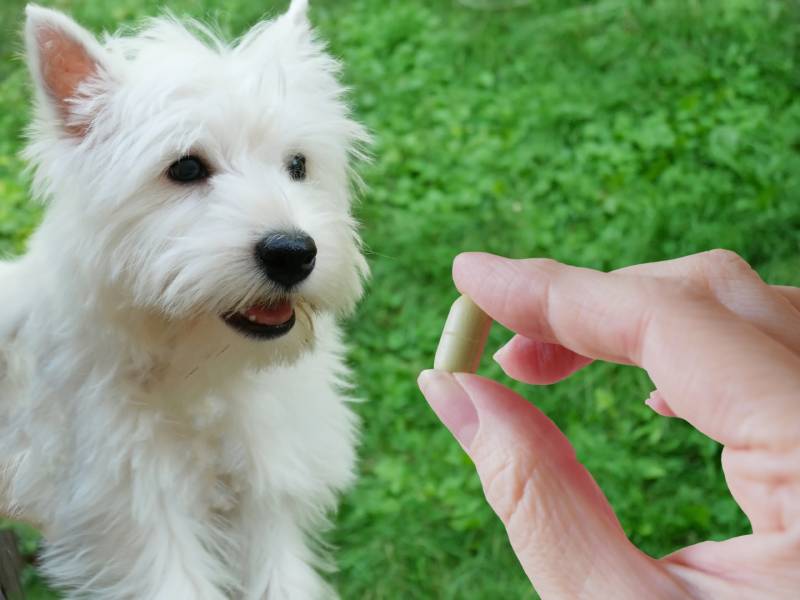
Ideal Diet for Maintaining a Healthy Weight
It is possible to feed your dog dry or wet food or even a raw or fresh food diet, and they still develop at the same rate. If feeding dry food, expect to feed about 1 cup a day to adult dogs, but puppies will need more than this. Buy quality puppy food, weigh your puppy, and follow the guidelines according to the actual age and current weight of your puppy.
Also, be sure not to progress to adult food too quickly and before your Westie has finished developing. Generally, puppies move to adult food at around 12 months of age, but if your Westie has finished growing by 10 months, it’s possible to change to adult food then.
How to Measure Your West Highland White Terrier
Measuring a Westie is quite easy. To measure weight, either have your dog stand calmly on the scales while you take a measurement or first weigh yourself and then weigh yourself while holding your dog and subtract the difference to get the weight of your dog. To measure the height of your dog, measure from the floor to the top of the shoulder blades or the whithers.
If you’re in any doubt, you can have the vet weigh and measure the height of your dog when you take them for a check-up.
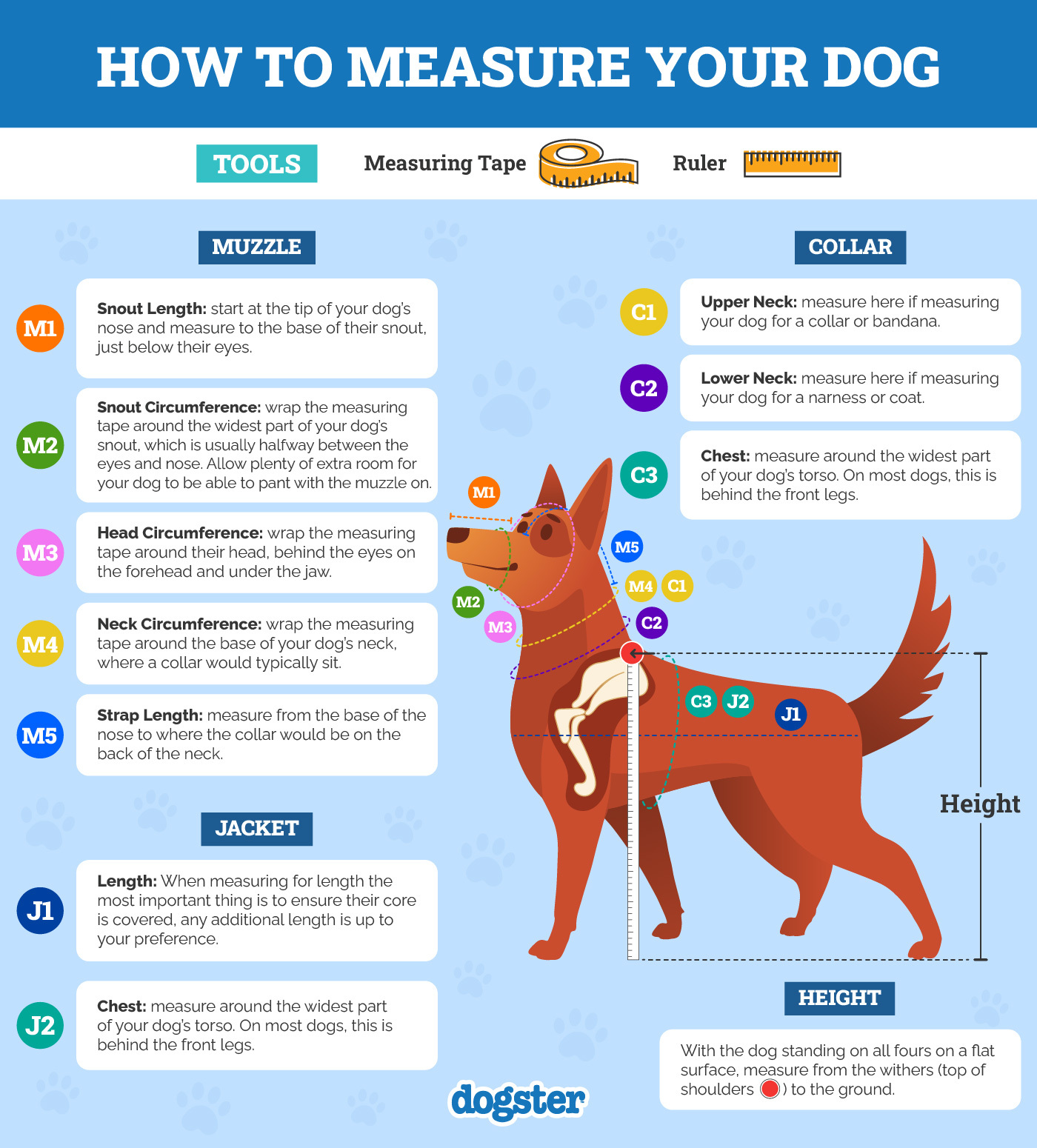

Conclusion
Westies are lively, energetic, and fun little dogs. While they were originally bred to hunt foxes and other small animals, they are most often kept as companion dogs today. They are loving and friendly with family, may be wary of strangers, and may be prone to chasing cats, albeit in a playful rather than aggressive manner.
The breed will reach maturity at about 12 months of age, but some can continue growing until they are 18 months of age, adult Westies generally weigh between 15 and 21 pounds and measure up to 11 inches in height.
Featured Image Credit: Morten Hjerpsted, Pixabay
